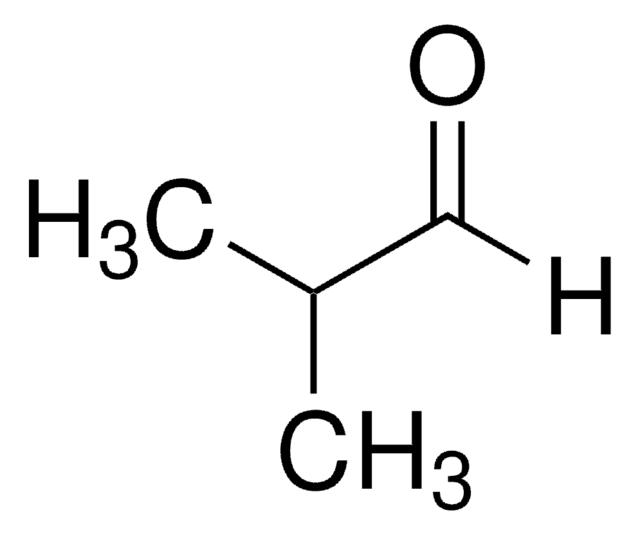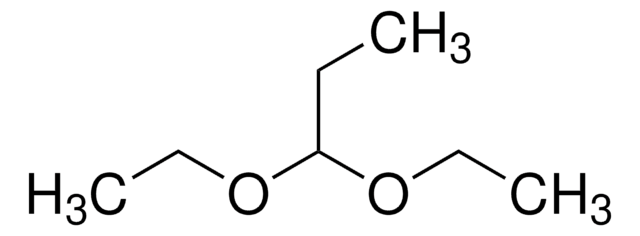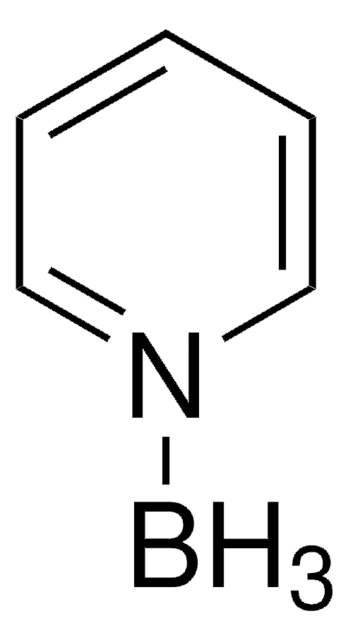538124
Propianaldehído
reagent grade, 97%
Sinónimos:
Propanal
About This Item
4.89 psi ( 20 °C)
Productos recomendados
grade
reagent grade
Quality Level
vapor density
2 (vs air)
vapor pressure
18.77 psi ( 55 °C)
4.89 psi ( 20 °C)
assay
97%
form
liquid
autoignition temp.
404 °F
expl. lim.
17 %, 26 °F
2.6 %, 31 °F
impurities
≤2.5% (water)
refractive index
n20/D 1.362 (lit.)
bp
46-50 °C (lit.)
mp
−81 °C (lit.)
solubility
organic solvents: soluble
density
0.805 g/mL at 25 °C (lit.)
storage temp.
2-8°C
SMILES string
[H]C(=O)CC
InChI
1S/C3H6O/c1-2-3-4/h3H,2H2,1H3
InChI key
NBBJYMSMWIIQGU-UHFFFAOYSA-N
¿Está buscando productos similares? Visita Guía de comparación de productos
General description
Application
- Unraveling the electrocatalytic reduction mechanism of enols on copper in aqueous media.: Research on the electrocatalytic reduction mechanisms of enols, including implications for propionaldehyde, provides valuable information for chemical synthesis and industrial applications in catalysis (Cui et al., 2022).
signalword
Danger
Hazard Classifications
Acute Tox. 4 Inhalation - Acute Tox. 4 Oral - Eye Dam. 1 - Flam. Liq. 2 - Skin Irrit. 2 - STOT SE 3
target_organs
Respiratory system
Storage Class
3 - Flammable liquids
wgk_germany
WGK 1
flash_point_f
-22.0 °F - closed cup
flash_point_c
-30 °C - closed cup
Elija entre una de las versiones más recientes:
¿Ya tiene este producto?
Encuentre la documentación para los productos que ha comprado recientemente en la Biblioteca de documentos.
Los clientes también vieron
Protocolos
-Tolualdehyde; Valeraldehyde; Isovaleraldehyde
Nuestro equipo de científicos tiene experiencia en todas las áreas de investigación: Ciencias de la vida, Ciencia de los materiales, Síntesis química, Cromatografía, Analítica y muchas otras.
Póngase en contacto con el Servicio técnico










